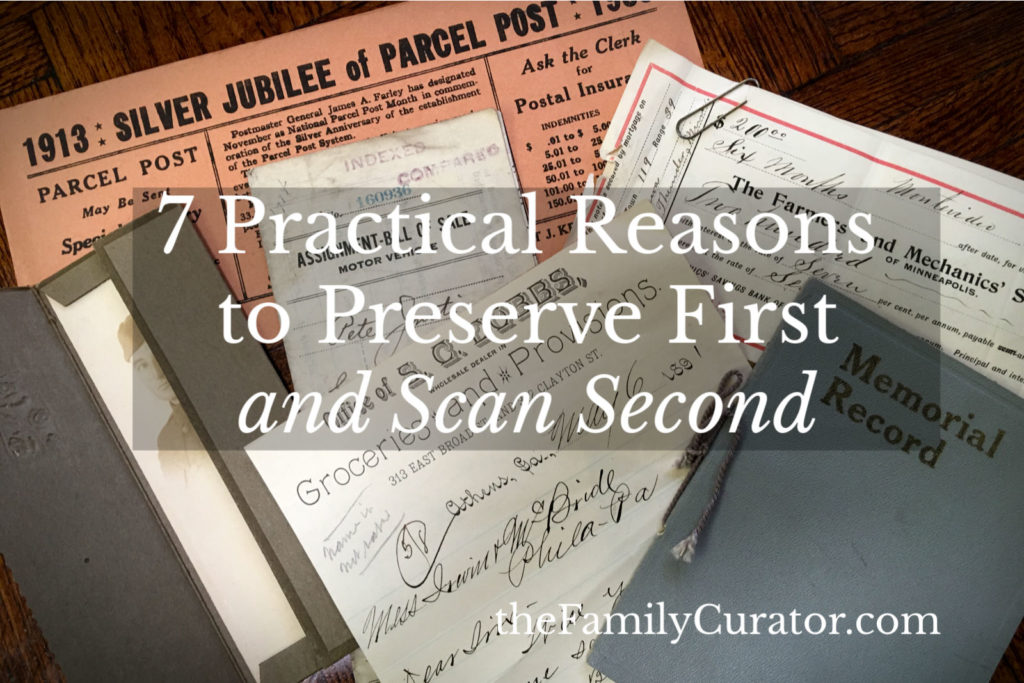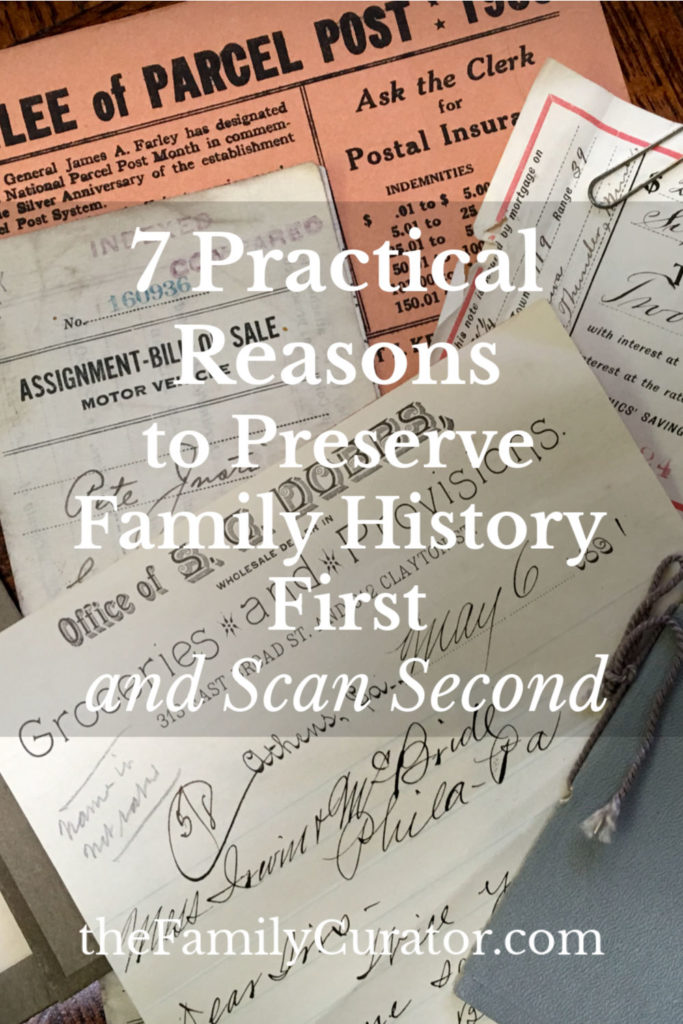
You aren’t alone if you’re looking at boxes of family photos, letters, or documents and thinking “I’ve got to get this all digitized right NOW!”
Archive First, Scan Second
I talk with many family historians who are panicked about scanning family collections. They want to jump in and scan all their photos and documents immediately, as a first step in working with their newly-inherited boxes of family photos and papers.
But, they quickly discover that digitizing a large collection is a huge investment in time, energy, and funds. Sometimes, even a small digitizing project grows into something bigger.
Digitizing requires decisions about equipment, organization, filenaming, resolution, backups, and more. Anyone who has started to digitize a large collection will tell you: It’s a project.
Not everyone finishes the task and moves on to organizing, preserving, and cataloging the original physical collection. Instead, the pictures and papers remain in an unlabeled boxes waiting for the next archivist to examine them once again.
Digitizing Family History Before Preserving is Risky
Think about “Big Picture Preservation.”
I like to encourage family curators to step back at look at the big picture before jumping in to digitize.
Move collections to preservation storage as a first step, instead of trying to scan individual objects. This approach has several advantages:
- Less handling means less risk of damaging originals
- Storing collections by owner retains “original order” and avoids intermingling families
- Damaged items can be identified for conservation
- Toxic materials such as staples, pins, food, or newsprint can be promptly removed or isolated from other items
- Surveying the entire collection will help determine an organizational plan
- Looking at the big picture will show new connections and themes
- AND MOST IMPORTANTLY, preserving first creates Peace of Mind in case you aren’t around to finish the entire project, your collection will be safely stored in archival boxes for the next family historian to pick up where you left off.
Life Happens
Genealogists are keenly aware that life can change in an instant.
Stop and step back from your collection. Think about your overall goals and then create a practical plan to Archive First, Scan Second.
Learn how to develop a plan that includes preserving and digitizing your family collection with my book, How to Archive Family Keepsakes (available at Amazon.com).
If you are ready to move your photos and documents into preservation storage today, check out The Family Curator Shop page for recommended archival storage containers.
Disclosure: Thank you for supporting The Family Curator website by shopping with the affiliate links on this site. There’s no extra cost to you, and your support helps keep this website free to all readers. Read full Disclosure.
If you like this post, please Share!







Denise, I just want to endorse your message here, based on my own experience. I can’t tell you how grateful I am to have found your book on family archiving BEFORE I waded too far into the process of scanning the large (and very disorganized) collection of photos and family papers I inherited several years ago. As I worked to get archival control of the material, at times I felt I wasn’t making progress quickly enough. But my patience is about to pay off big time. Original order has been respected, yielding lots of interesting clues about would have been lost otherwise; I’ve set clear priorities for what is worth the time and effort of digitizing; and I know exactly how many and what kind of final archival containers to order. The scanning will go so much more smoothly now. Thank you for showing me the way!
Congratulations on your progress, Donna, and thank you for the kind words about my book. I had to start over a few times to reclaim information I missed from moving too quickly at first, so it’s good to hear that you didn’t have to learn that lesson the hard way. Good luck with the next phase of your archiving project.